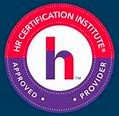
This course, has been approved for 1 HR (General) recertification credit hours toward aPHR™, PHR®, PHRca®, SPHR®, GPHR®, PHRi™ and SPHRi™ recertification through HR Certification Institute® (HRCI®).
Keith Warwick , PE earned a B.S. in Civil Engineering from the University of California at Davis. He became a California Professional Engineer in 1983 and has also held PEs in Indiana, Tennessee, Illinois and New York. He has 34 years of civil, environmental and safety engineering experience. He i Read more
You could go to Jail if it is proven that someone died at your facility due to willful disregard
Of OSHA regulations. If you do not get sent to Prison you could be fined heavily. While a large company can absorb a fine of a few thousand dollars or tens of thousands of dollars a small company cannot pay those types of fines and stay in business. And how do you explain to a child that their father or mother will not be coming home ever again because you saved a couple thousand dollars by taking safety shortcuts.
What Will You Learn:
This class covers ladder safety, scaffold inspection, forklift safety, walkway design, welding safety procedures, personal protective equipment requirements, and more. The class will describe general industry safety as well as construction safety regulations. It will describe how to implement these regulations at your facility. Even after workman’s compensation has been paid it can still cost the company a significant amount of money if a death or serious injury occurs at your facility, These costs are for medical expenses not covered by workman's compensation, ambulance costs not covered by workman's compensation, owner’s time, President's time, consulting fees, safety officers time, attorney fees, severance pay, cost of hiring a new employee, cost of training a new employee, fines, improvements that must be made to the facility, changes to procedures, and other costs.
Background:
The Occupational Safety and Health Act was passed in 1970 following several workplace accidents, The Occupational Safety and Health Administration was formed in 1970 following passage of the regulations. The goal of OSHA is to provide a safe and healthy workplace.
The OSH Act covers most private sector employers and their workers, in addition to some public sector employers and workers in the 50 states and certain territories and jurisdictions under federal authority. Those jurisdictions include the District of Columbia, Puerto Rico, the Virgin Islands, American Samoa, Guam, Northern Mariana Islands, Wake Island, Johnston Island, and the Outer Continental Shelf Lands as defined in the Outer Continental Shelf Lands Act.
What You Get:
• Training Materials
• Live Q&A Session with our Expert
• Participation Certificate
• Access to Signup Community (Optional)
• Reward Points
Who Will Benefit:
• Occupational Safety and Health Administration engineers
• City Managers
• Civil Engineers
• Facility Owners
• Superintendents
• Supervisors
• Safety Officers
• Environmental Officers
• Firefighters
• Policemen
• Paramedics
• Environmental restoration contractors
• Construction Contractors
• Gardeners
• Prison Wardens
• Doctors
• Nurses
• Attorneys
• Assisted Living Facilities
• Hospitals
